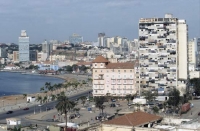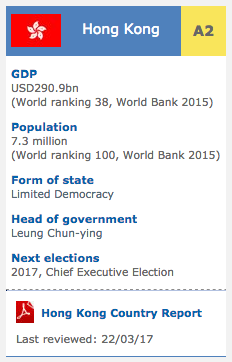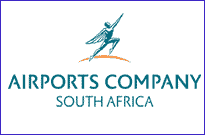Angola: Angola Angola struggles with contingent liabilities
2017/05/07

General Information |
|
| GDP | USD102.6bn (World Ranking 59, World Bank 2015) |
| Population | 25 Million (World Ranking 51, World Bank 2015) |
| Form of state | Republic |
| Head of government | Jose Eduardo DOS SANTOS |
| Next elections | 2017, legislative |
Country Rating d3 |
|
Strengths
|
Weaknesses
|
Economic Overview
Long-term growth prospects diminished
Angola’s economy has undergone a major structural shock in response to the persistence of low oil prices. Growth is expected to reach 1.5% in 2016, 0.5% in 2017 and 2% in 2018 (see chart 1). Due to operational inefficiencies associated with the state-owned oil operator Sonangol, oil output has not grown significantly over the last two years. In fact, it fell short of the government’s 1.8 million b/d target. Oil accounts for 97% of total exports and makes up over 75% of government revenue. The shock has deteriorated Angola’s macroeconomic stability. The local currency - kwanza - depreciated by 40% against the dollar since September 2014. This drove up inflation, which may reach 30% y/y in 2016. China is the country’s most important external partner. It has lent over USD20bn to Angola since 2002 and has 50 state-owned and 400 private companies operating in the country. As China transitions to be more consumer-driven, it is pivoting to vibrant services and manufacturing economies while scaling down its exposure to resource-rich countries with poor governance such as Angola .
Deterioration of public finances
Angola’s officially reported public debt is slightly below the 60% cap stipulated by law. However, if one includes fiscal liabilities parked in Sonangol, public debt is closer to 78%. It could rise to 90% in 2017, up from 40% in 2014 (see chart). This contingent liability has key implications for long-term debt sustainability. Reluctance to tap IMF assistance is bad news as public debt dynamics are hardly sustainable. Fiscal consolidation is lacking (fiscal balance -7% in 2017).
Political and developmental challenges
In a surprising statement, Angola’s ruling MPLA has announced that President Dos Santos would not seek re-election in 2017. Dos Santos is the second longest-serving leader in Africa having ruled the country since 1979. Dos Santos’ government has come under increasing scrutiny with urban protestors demanding political reform, and criticizing the enrichment of Angola’s elite. President Dos Santos appointing his son to head the country’s sovereign wealth fund, and his daughter to head and restructure Sonangol, further fuelled resentment.
Meanwhile, social unrest risks are elevated. The veteran leader’s departure is unlikely to usher in wider political reform, and the government has had to cut social expenditures by 10% in 2016. Despite the country reaching middle-income status according to the World Bank, it is ranked as one of the world’s most unequal countries. More than half of Angolans live under the poverty line.
- Related Articles

Africa's Relationship With China Is Ancient History
2017/07/02 In 2002 South Africa's Parliament unveiled a digital reproduction of a map - of China, the Middle East and Africa - that some speculated could be the initial map of the African continent. The Da Ming Hun Yi Tu - the Comprehensive Map of the Great Ming Empire - was drawn up around 1389 during the Ming Dynasty, according to historian Hyunhee Park.
Africa: Making Things Happen at the Bank - 'Not a Talk Shop' - Akin Adesina
2017/07/02 Dr. Akinwumi Adesina is focusing on five areas to achieve the African and world goals for a prosperous continent since becoming president of the African Development Bank - Africa's major public financial institution in September 2015. He was a keynote speaker at this month's Corporate Council on Africa's U.S.- Africa Business Summit in Washington D.C. and moderated a lively panel with five African government ministers. He as well received the Gene White Lifetime Succcess Award from the World Child Nutrition Foundation. This week, he was named the 2017 recipient of the World Food Prize, a prestigious honor that includes a $250,000 award. In an interview in Washington, DC, Adesina discussed the Development Bank's ambitious schedule and his vision for attracting the increase capital Africa needs. Posting questions for AllAfrica was Noluthando Crockett-Ntonga.
Climate change laws around the world
2017/05/14 There has been a 20-fold increase in the number of global climate change laws since 1997, according to the most comprehensive database of relevant policy and legislation. The database, produced by the Grantham Research Institute on Climate Change and the Environment and the Sabin Center on Climate Change Law, includes more than 1,200 relevant policies across 164 countries, which account for 95% of global greenhouse gas emissions.
Angola Outlook for 2016-17
2016/05/28 The county (Angola) is situated in Southern Africa on the South Atlantic Ocean, with Namibia The county (Angola) is situated in Southern Africa on the South Atlantic Ocean, with Namibia and Democratic Republic of the Congo as neighbor. It has borders with Congo (Kinshasa) for 2511km, Congo (Brazzaville) for 201km, Namibia for 1376km and Zambia for 1110km. Land in Angola is narrow coastal plain rises abruptly to vast interior plateau. The climate is semi arid in south and along coast to Luanda in the north has cool and dry season (May to October) and hot and rainy season (November to April). African languages.
Exchanges and cooperation in other areas continued to expand.
2015/10/01 The year 2013 marked the 30th anniversary of the establishment of diplomatic ties between the People's Republic of China and the Republic of Angola. The strategic partnership between the two nations moved forward steadily, and the bilateral exchanges and cooperation in all areas advanced smoothly.
- Angola News
-
- ANGOLA: Angola's Elections Trigger a Crisis of Legitimacy
- ANGOLA: Congo's Sassou hails retiring dos Santos for service to Africa
- ANGOLA: Angolan opposition parties formally challenge election results in court
- ANGOLA: Submarine cable deployed in Angola to link Africa to South America
- AFGHANISTAN: UNWTO: International tourism – strongest half-year results since 2010
- BOTSWANA: Why governments need to support the financial sector to meet the unserved needs of smallholder farmers
- Trending Articles
-
- SOUTH AFRICA: Nigeria and South Africa emerge from recession
- BAHRAIN: Aluminium Bahrain’s Line 6 Expansion Achieves 25 Percent Completion
- CHINA: Chinese-supported infrastructure projects change Zambia's landscape
- NIGERIA: The Security and Exchange Commission approves the 40th Annual General Meeting of Oando PLC
- UZBEKISTAN: Former deputy PM named Uzbekistan Airways head
- EUROPE: Ball Corporation Debuts Three New Aluminium Beverage Can Sizes










